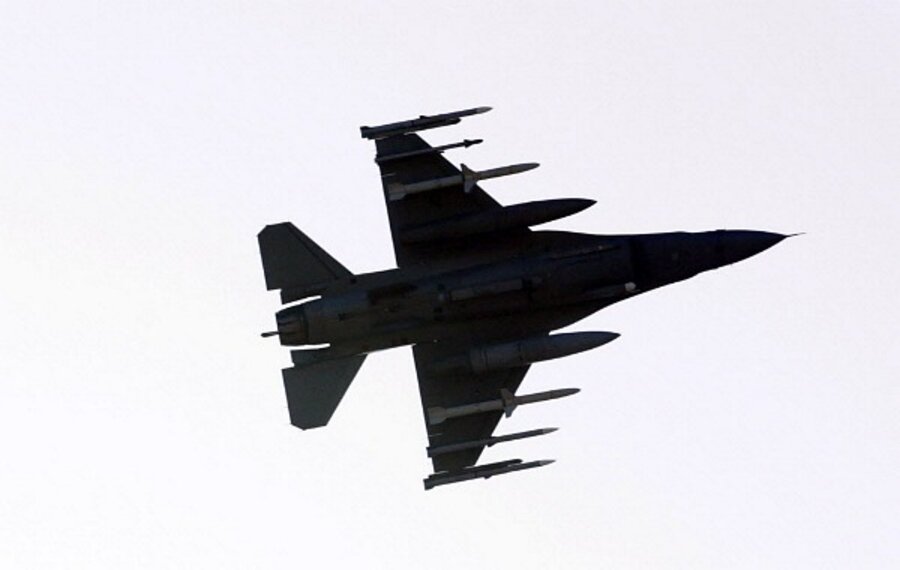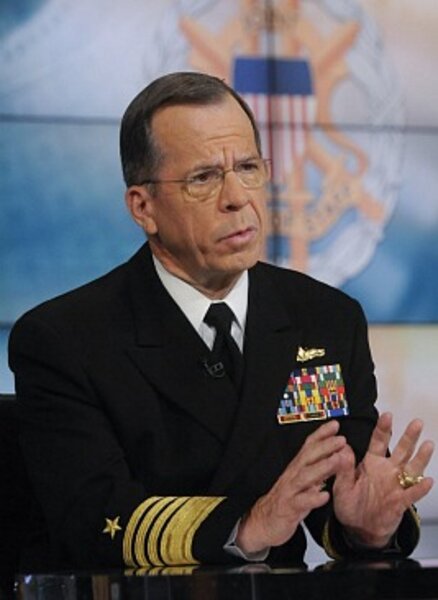With no-fly zone in Libya now, US-led coalition freer to attack
Loading...
The first day of US-led attacks on Libyan military targets appears to have gone as planned.
Saturday’s barrage of ship-based Tomahawk cruise missiles effectively established a no-fly zone, Joint Chiefs of Staffs Chairman Adm. Mike Mullen said Sunday.
This has allowed US fighters and radar jammers to fly over Libya, continuing the hunt for air defense facilities as well as tanks, artillery, and other Libyan army forces threatening rebel forces and other civilians. US pilots apparently are safe now from the long-range, high-altitude surface-to-air missiles that might have resulted in downed pilots becoming prisoners of war.
Many key questions remain, however, Adm. Mullen acknowledged on several Sunday morning television news programs.
What happens if civilians loyal to Muammar Qaddafi in effect become human shields, surrounding potential military targets or the Libyan leader’s compound? What happens if the US-led coalition prevails militarily but Qaddafi remains in place? And what happens if Qaddafi is killed or leaves Libya but the country fractures along tribal lines?
"How this ends from the political standpoint, I just can't say," Mullen said on CNN's "State of the Union."
President Obama has pledged that no US ground troops will be involved in the UN-sanctioned effort. But if the fight moves into urban areas, that makes attacks from the air (or from ship-based cruise missiles) much more difficult if civilian casualties are to be avoided.
Libyan state television reported Sunday that 48 people had been killed in the initial attacks Saturday. That could not be confirmed since western reporters were not allowed to visit targeted areas or hospitals.
So far, Qaddafi remains defiant against what he calls “foreign colonialism.”
“We are going to fight, we are going to fight for every square of our land,” he said on Libyan state radio. “We will go as martyrs.”
After Saturday’s attacks, the next step was conducting bomb-damage assessment.
The first major strike involved 112 Tomahawk cruise missiles launched from US Navy ships (and one British submarine) against SA-5 Russian-made surface-to-air missiles, early warning sites, and key communication modes.
On Sunday, US Navy EA-18G radar jammers began flying over Libya as part of the effort to enforce the no-fly zone. In addition, US Marine Corps AV-8B Harrier jets, which can take off and land vertically, were launched against ground targets from the amphibious ship USS Kearsarge in the Mediterranean. US Air Force F-15s, F-16s, and B-2 stealth bombers reportedly were involved in the US-coordinated effort to establish air superiority and prevent Libyan army attacks on civilians.
French and British fighters continued to fly combat missions as part of what some are describing as a “shock and awe” attempt to bring about collapse of Qaddafi’s regime – a controversial reference to the early days of the US-led invasion of Iraq in 2003, which failed to bring about the quick resolution that Bush administration officials had boasted about.
From the start, US officials have stressed that the US role this time would be “supportive” of other countries in a coalition that includes Canada, European nations, and at least rhetorical support from some Arab countries.
“Leading it now, we’re looking to hand off that leadership in the next few days,” Mullen said.
Some have criticized President Obama for going ahead with a trip to Latin American just as the US was going to war in a third Muslim nation. But Obama has kept a close eye on the Libya situation.
According to the White House, Obama had a secure conference call Sunday morning with National Security Advisor Tom Donilon, Secretary of State Hillary Clinton, Secretary of Defense Bob Gates, Army Gen. Carter Ham (head of the US Africa Command), and Deputy National Security Advisor Denis McDonough.
This is not the first time that the US has conducted air attacks against Libya.
Following the 1986 bombing of a German disco, which killed two American servicemen and injured dozens more – and which was blamed on Libya, based on intercepted messages – then-president Ronald Reagan ordered retaliatory strikes against Tripoli and Benghazi.
Qaddafi survived the attack on his compound, but scores of other people were killed, including the Libyan leader’s young daughter. Twelve years later, Libyan agents under orders from Qaddafi planted a bomb on Pan Am Flight 103. The explosion over Lockerbie, Scotland, killed 270 people on the passenger jetliner and on the ground.



